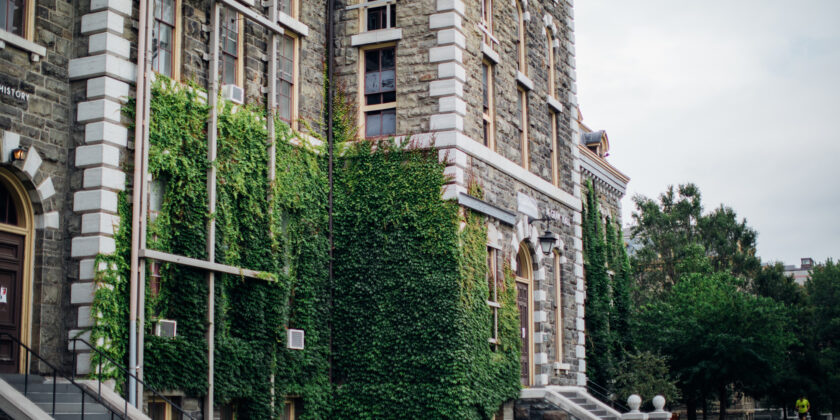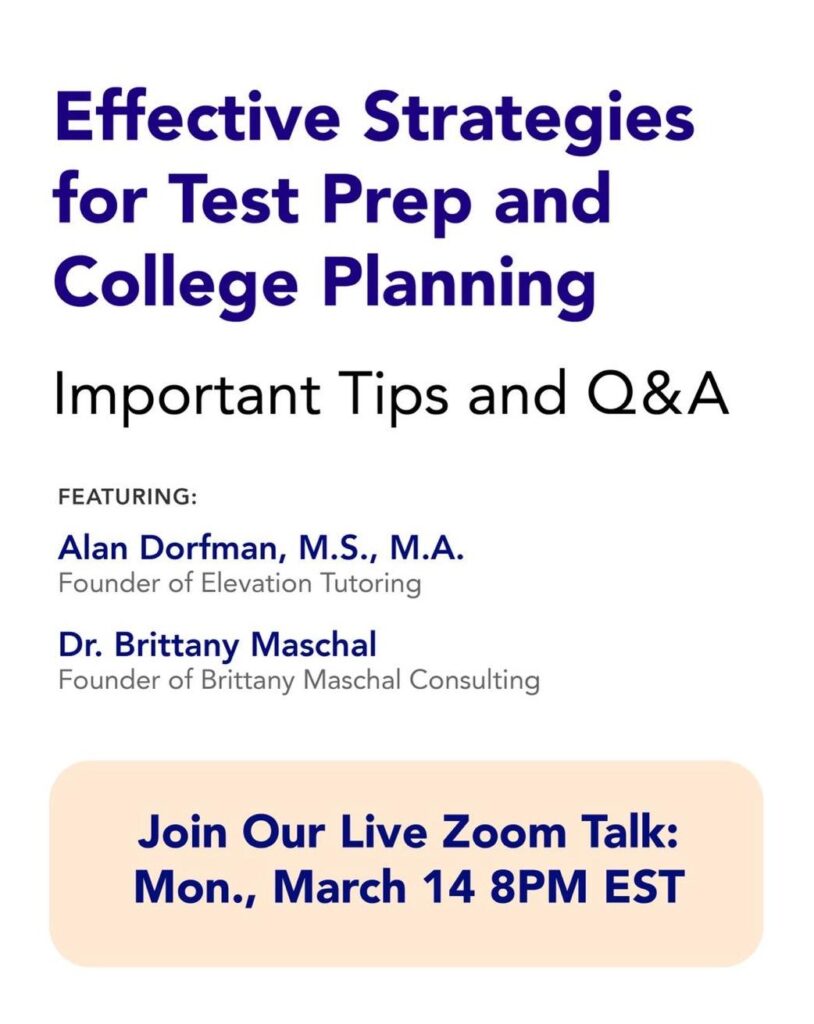
Focus on the next fours years, not the last.
The class of 2022 is resilient. They’ve weathered a pandemic, the confusion of test-optional, okay at best online schooling—the list goes on.
Great read in Charter by S. Mitra Kalita. “Bottom line: You’re going to be fine. Let’s focus on the next fours years, not the last!”
*Stay in the know! Subscribe*

Class of 2022 Acceptances
Our students rock! We are grateful they chose to have us along for the ride. This year was extraordinarily tough, and we are so proud of the work they put in. Their efforts did not go unnoticed by colleges either. Although we are believers that the journey is just as sweet as the reward, we are celebrating the reward (acceptances) in this post.
Below you will find some of the schools where the students we worked with earned acceptances year:
University of Pennsylvania*
Cornell*
Dartmouth*
Duke*
Stanford*
Georgetown*
Williams*
Harvard
Brown
Princeton
University of Chicago
University of Virginia*
Vanderbilt
WashU
JHU
NYU
Wesleyan
Boston College*
Northeastern*
St. Andrews*
Tulane*
Bates
Bowdoin
Colby
Vassar
Claremont McKenna
Emory
Indiana University Kelley School of Business*
University of California, Los Angeles*
University of Miami*
University of Michigan*
University of Richmond*
University of Rochester*
University of Texas, Austin*
University of Wisconsin*
Bard*
FIDM
Parson’s
Pratt
Baylor*
Chapman*
Clemson*
Coastal Carolina*
College of Charleston*
Colorado College
Fairfield*
Fordham*
Grinnell
Lehigh*
Loyola Chicago*
Macalester
Miami Ohio*
SDSU
Marymount Manhattan
McGill
NJIT
Penn State*
Oberlin
Ohio State*
Rhodes
Quinnipiac
Santa Clara*
Sarah Lawrence
Southern Methodist University*
St. John’s
TCNJ*
University of Delaware*
University of Florida*
University of Illinois*
University of Iowa
University of Maryland*
University of Massachusetts, Amherst*
University of Pittsburgh*
University of San Diego
University of South Carolina*
University of Tampa*
University of Tulsa
University of Vermont*
University of Washington*
*multiple students admitted
*Stay in the know! Subscribe*

Helping Teens Weather College Rejection
Rejection stinks! But it’s a normal part of life and college admissions. This short article is for parents. Hang in there. In six months from now, the college application process will be very far in your rearview!
*Stay in the know! Subscribe*

2022 Waitlist Strategy
We predict big waitlists again this year.
Are you on one? Reach out for individualized advice, and keep reading below!
For an example letter, please subscribe to our blog (link below) and email us
Getting admitted from the waitlist is not easy. However, it is possible with a viable strategy and some persistence. Although we do not suggest being overly optimistic, here are some of the strategies that have worked.
First, get familiar with the WL data from past years. How many students are offered spots on the WL? How many accept their spot, and more importantly, how many does school X ultimately admit? Some of these numbers are dismal, but it is best to know what you are up against. Look at the Common Data Set first (http://www.commondataset.org/). A few other sites to review:
Before implementing waitlist strategies (below), it is important to deposit at a current top choice school (a school where you have been admitted) and get excited about the prospect of attending. Take advantage of admitted student days and other events that connect you with potential future classmates, including joining “Class of 2026” social media groups. These forums are often very informative, fun, and can help you take your mind off the waitlist waiting game.
Once you have accepted a spot on the WL, deposited elsewhere, and familiarized yourself with the waitlist data, consider the strategies below. Not all of them are novel, but without much to lose, why not do all you can so you can look back without any what-ifs?
- Write a waitlist letter. This letter should contain information updating the school on what you’ve been up to both inside and outside of the classroom since the time you applied—but most importantly—it needs to fill in any GAPS from your original application and highlight a few specific value-adds you will bring to X campus. This is where individualized feedback can be critical.
- Consider including:
- Academic Updates: Spend some time talking about coursework and school projects, and make connections to future courses of study. You can even drop in related courses you’d like to take at school X, like those you’d include in a Why School essay, but only do this if you did not submit an essay of this type when you applied, otherwise you are being redundant and that is not well-received.
- Extracurricular Updates. But only if significant and can be connected to how you will add value to the school where you are deferred. This includes school and non-school clubs, service commitments, and/or other leadership experiences you can highlight. Like the academic paragraph(s), making connections to similar opportunities you plan to undertake in college can be helpful additions. For example, if you talk about a new project you spearheaded as VP of your school’s Interact Club, you may want to include that you hope to lead a similar project within a specific club or group at school X. Being very specific is important.
- The additional ways you have connected with and continued to get to know school X since you applied. This could include setting up an informational interview with a local alum, a current student, reaching out to your local regional alumni group (more on this below), or continuing to connect with your regional rep via email.
- Make sure you read and follow any specific WL directions that are shared with you. You might be asked to send updates to a specific WL manager, or upload them on your applicant portal. If you previously connected with your rep (you should have at the beginning of the process), reach back out and ask them if they have any advice for you as a waitlisted candidate. Keep this line of communication open; do not send updates every week, but stay in touch to continue to demonstrate interest.
- Ask your guidance counselor to call the admissions office and advocate for you, as well as provide any additional information they may have that will support your candidacy. Ask them to back up what they say on the phone in an email if they have time. Make sure they send updated grades/transcripts promptly. Your grades should have remained the same or gotten better, not dipped.
- Obtain and have an extra letter of recommendation sent, but only if the school welcomes extra LORs. A teacher, coach, or someone else close to you who can speak to your potential contributions to the university could draft this letter. Some schools explicitly state on their WL docs they do not welcome or want extra LORs; if that is the case, don’t send. *Side note on alumni letters and letters from well-known and or famous people. Many students ask if these are helpful to send, and the answer is no unless the person knows well you or they are a very high-level donor with solid connections to admissions (even then, why count on someone else?). If you think that a big name vouching for you will help, it generally doesn’t as a stand-alone factor, and officers can see through these often brief and less than meaningful notes.
- Worth saying again: Make sure you follow any directions they provide!
Additional strategies…
- Check if school X has a local alumni group (Google search) and if so, reach out to them and ask if there is anyone willing to meet with you via Zoom for an informal informational interview. Use this meeting as an opportunity to learn more about the school, as those learnings might be good fodder for a WL update.
- Use social media to your advantage. Don’t be afraid to follow your WL school on TikTok, Instagram, or other social channels to connect. Don’t forget to open all email correspondence from the school, as schools track opens/clicks as interest.
You don’t need to…
- Show up on campus or engage in other over-the-top moves that you think will make an impact. They won’t. Please understand that this type of behavior is not appreciated or welcomed.
More questions about the WL? Email us!
*Stay in the know! Subscribe*

TODAY! 3/14 at 8pm Eastern: Test Prep and College Planning Open Forum Q&A
Join us on March 14th at 8 pm eastern for a casual discussion on all things test prep and college planning. We’ll be presenting a few of our top tips and strategies but will leave most of the session open for your questions. This session is for students and parents.


Start Now: College Counseling for High School Juniors
We’ve seen too many students wait until the summer after 11th grade to try to develop and implement the strategies needed to tackle the college application process successfully and with ease. Often, there is just not enough time to do the pre-work that results in the most effective essays, outreach, and positive admissions outcomes.
The best time to start? Now.
Juniors, right now you can:
- Develop relationships with admissions officers and regional reps (the people who make key decisions on your application) as well as current students and faculty (we can fill you in on why these connections are so important)
- Open up a Common App account to get familiar with the system + complete the base data
- Make the best of campus visits and leverage contacts at colleges on these visits
- Craft a preliminary college list that maximizes the 5+ application plans colleges now use
- Start brainstorming for the Common App essay (the MOST important essay of most apps)
We hate seeing the second half of junior year go to waste!
Contact us today to discuss what you can do now to always stay a step—or three—ahead of the game.
We are also co-hosting a free online event on March 14th at 8pm eastern. Join us to hear top tips and effective strategies for the college process + ask us anything in the live Q&A! Register today!
*Stay in the know! Subscribe*

Regular Decision Notification Dates
March is a big month for decision releases, but don’t be surprised if some schools need until early April due to app numbers this year.
Head over to College Kickstart for a frequently updated list of RD decision release dates.
*Stay in the know! Subscribe*

Common Application Essay Spring Bootcamp
Complete Your Common Application Essay in One Week!
Want to get the most important piece of writing in your college application completed efficiently, effectively, and early?
In one week of focused 1:1 work, you will be able to check a very important college application item off your list: the Common Application essay.
In this bootcamp you will:
- Attend a live session to learn what makes a successful Common Application essay.
- Complete our specialized brainstorming process, working with an essay expert 1:1 to decide on the most unique approach to your essay.
- Draft your essay and receive detailed, targeted feedback to take it from a rough draft to a polished final essay.
You’ll also get access to sample personal statements by students we’ve worked with (and who have gained admission to selective colleges and universities!).
When is this program offered?
- Bootcamps are offered on-demand in March, April, and May! Let us know your preferred week, and we will reach out to you with our availability. If we are not available for your preferred week, we will work with you to find another time that fits both of our schedules.
Who should sign up for this program?
- High school juniors who are ready to write their Common App essay (aka the personal statement) and who have one hour daily to dedicate to it over the course of one week.
How do I get more information and pricing?
- Please email us! For information about comprehensive college counseling, please visit this page.
*Stay in the know! Subscribe*

Personal Statement Do’s and Don’ts
It’s almost time to start writing essays!
Our essay experts know best. Check out these 10 tips from Emma that will help you write the most effective personal statement. Interested in working with Emma? Contact us.
Now is the best time for juniors to start with us!
- Don’t worry about the prompts. It’s helpful to read through the prompts to see if doing so sparks any ideas; however, there is no need to stress about writing an essay that exactly “answers” a prompt. Your goal is to write the best essay you can about whatever you decide is best to write about. Working with students 1:1, we totally disregard the prompts and usually find that their essay still easily fits under one of the questions. And, if not, there is often an open-ended prompt such as: “Share an essay on any topic of your choice. It can be one you’ve already written, one that responds to a different prompt, or one of your own design.”
- Do open with a scene. A strong opening scene draws the reader into your essay. Admissions officers and their first-round readers have hundreds of applications to get through—make yours stand out from the first sentence. Intrigue them or scare them or make them laugh. Make them want to keep reading.
- Do focus on a single story. You only have 650 words. Perhaps that sounds like a lot to you: it’s not. There is no reason you should worry about filling it up. Through our process, you will find out how to generate enough detail to write an essay about any story. Nor should you worry about cramming as much as possible into the personal statement. Remember that colleges have all of your application data and that trying to do too much in the essay will only end up making your essay feel rushed and scattered.
- Do make sure that your story has a clear beginning, middle, and end. You can tell your story out of order—for instance, opening with a scene from a stressful moment in order to build suspense before jumping back into chronology—but you always want to make sure your story has each of these elements. Skipping any single one will confuse your reader and make your story feel incomplete (because it is!).
- And yet don’t get bogged down in detail. We usually find students have trouble generating enough detail. But sometimes we get a student who is unable to summarize effectively, too. Having too much detail can make your story confusing and also mean that your reader will have trouble understanding what the most significant elements are. It usually also means you don’t have room for reflection—the most important element in the essay!
- Do present yourself in a positive light. We actively encourage you to tell a story that showcases your vulnerabilities, failures, weaknesses, and mistakes. However, either your narrative or your reflection (or some combination of the two), needs to ultimately redeem you so that your essay, in the end, shows you to be someone who is actively working to improve—to rectify mistakes, move past failures, or strengthen weakness. Your essay should be honest, but its main purpose is to make you seem like someone admissions officers want to see at their colleges! Make sure you come off well.
- Don’t use huge thesaurus words. Again: you aren’t trying to impress the admissions officers! You are trying to show them who you are—and you are trying to make them like you. Using big words can mean using words you don’t quite know how to use, and that will show. Even if you do know how to use them, unless your essay is about how much you love long words or languages, using the big, 25-cent words can make you sound pretentious and overly formal. The language should sound like you and be relatively casual—not curse-word, talking-with-friends casual, but maybe talking-with-your-grandmother casual.
- Do use vivid, interesting words and varied sentence structure. Being casual doesn’t mean the writing shouldn’t be good or interesting! Do push yourself to use words you might not use in your everyday speech, and do mix up the sentence structure to keep the writing varied and exciting. Do feel free to include words from your personal vocabulary—words from the language you speak at home or from a regional dialect or words you’ve made up. That can add a lot of texture and personality to an essay. Just make sure you define the words for your reader if the meaning isn’t clear from context.
- But don’t use emotional language: I was happy; I was sad. Instead, let an action depict the emotional state. That is, instead of saying “I was happy,” you might write, “I couldn’t help skipping a few steps down the street after hearing the news.” And, instead of saying “She was sad,” you might write, “Her shoulders slumped, and she cradled her head in her hands.” You can’t see an emotion, and you always want to give the reader something to see.
- And don’t use cliche—i.e. common, predictable, overused—language. Cliche language includes (but is definitely not limited to!) phrases like:
- I need to be true to myself.
- Time heals all wounds.
- Every cloud has a silver lining.
- Good things come to those who wait.
- I learned more from them than they did from me.
- Every rose has its thorn.
- You win some, you lose some.
- Little did I know.
Of course, your essay might have one of these messages at its heart. Maybe you did learn more from the kid you tutored than they learned from you. Maybe you did find the “silver lining” in a terrible situation. Both of these could make for great essays. But you want to verbalize that realization in your own unique and surprising way.
For more, grab a copy of The Complete College Essay Handbook. It’s a no-frills, practical guide that will give students the confidence and know-how they need to craft the best essays for every single school on their list—in less time and with less stress.
*Stay in the know! Subscribe*
